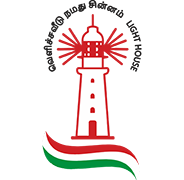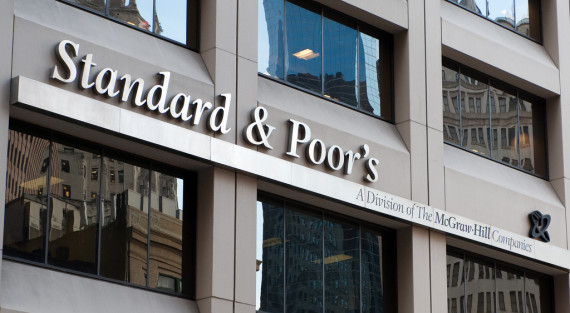Standard and Poor’s has downgraded Sri Lanka to ‘CCC’ from an earlier ‘CCC+’ with the outlook negative at the lower level as the currency continued to be under pressure from liquidity injections though reserves were boosted in December with a swap from China.
Sri Lanka is now making liquidity injections mostly to sterilize interventions with bond markets operating after price controls were lifted.
If the government signals an intention to restructure commercial debt rating would be further downgraded.
“Foreign exchange resources will be further pressured over the coming quarters by additional external sovereign debt maturities and current account requirements,” the S&P said.
“These developments indicate a rising probability of sovereign default scenarios playing out over the next 12 months in the absence of an unforeseen positive development.”
“The negative outlook reflects our expectation that Sri Lanka’s external financial position will deteriorate further over the coming quarters.
“This would affect Sri Lanka’s ability to service its debt over the next 12 months.”
The rating agency said a “relief package” while boosting economic activity would also weaken the government’s fiscal position and worsened the risks associated with the government’s already-high debt burden.
The handouts mostly went to state workers who were hit by high inflation created by past money printing who were beginning to protest demanding salary hikes.
S&P said it may revise the outlook to stable or upgrade the rating if Sri Lanka can “significantly boost” reserves or its economic recovery is much stronger than expected.
“This could lower the risks associated with the government’s debt-servicing capacity,” the agency said.
Related
Why Sri Lanka’s rupee is depreciating creating currency crises: Bellwether
However other analysts have warned for some time that stronger the economic and credit recovery as liquidity injections made to enforce low rates, the bigger the hit on the balance of payments as the new money turns into imports which are not controlled.
the full statement is reproduced below:
Sri Lanka Rating Lowered To ‘CCC/C’ On Increasing External Financing Risks; Outlook Negative
Overview
Sri Lanka’s external position continues to weaken owing to elevated external obligations and uneven access to financing.
Foreign exchange resources will be further pressured over the coming quarters by additional external sovereign debt maturities and current account requirements.
These developments indicate a rising probability of sovereign default scenarios playing out over the next 12 months in the absence of an unforeseen positive development.
We lowered our long-term sovereign credit rating on Sri Lanka to ‘CCC’, from ‘CCC+’ previously. At the same time, we affirmed our ‘C’ short-term credit rating on the government.
The outlook on the long-term rating is negative.
Rating Action
SINGAPORE (S&P Global Ratings) Jan. 12, 2022–S&P Global Ratings today lowered its long-term sovereign credit rating on Sri Lanka to ‘CCC’, from ‘CCC+’ previously. The outlook is negative. At the same time, we affirmed our ‘C’ short-term credit rating.
Outlook
The negative outlook reflects our expectation that Sri Lanka’s external financial position will deteriorate further over the coming quarters. This would affect Sri Lanka’s ability to service its debt over the next 12 months.
Downside scenario
We could lower our ratings if Sri Lanka’s fundraising activities fall short of government targets or its foreign exchange reserves erode further beyond our expectations, leading to higher risk on the sovereign’s ability to service debt.
We could also lower the ratings if the government signals its intention to restructure its outstanding commercial debt, implying that investors would receive less value than that promised on the original securities.
Upside scenario
We may revise the outlook to stable, or raise the rating, if Sri Lanka can significantly boost external buffers or its economic recovery is much stronger than we expect. This could lower the risks associated with the government’s debt-servicing capacity.
Rationale
The downgrade reflects continued deterioration in Sri Lanka’s ability to maintain sufficient foreign exchange resources to meet elevated external obligations. The Sri Lankan government faces increasingly likely default scenarios without unforeseen significant positive developments.
Timely debt service will likely become increasingly difficult over the next 12 months, given Sri Lanka’s vulnerable external profile, sizable fiscal deficits, heavy government indebtedness, and hefty interest payments. These factors significantly constrain our ratings. Macroeconomic policies, including the recent introduction of a US$1.2 billion relief package, have provided some support to the pandemic-hit economy. But they have also weakened the government’s fiscal position and worsened the risks associated with the government’s already-high debt burden.
Institutional and economic profile: Economic recovery under pressure from pandemic, external stresses
Sri Lanka’s economic recovery will be challenged by the ongoing pandemic and external financial stresses, hampering consumer sentiment. This could affect access to capital.
We forecast real GDP growth at 2.2% this year, compared with our estimate of 3.0% expansion in 2021.
The government has maintained a supportive fiscal policy stance despite its weak finances.
Sri Lanka’s economy will face sustained headwinds from the pandemic and external financial conditions this year, limiting its recovery potential. The Sri Lankan economy contracted by 1.5% year on year in the third quarter of 2021, reflecting the effects of a severe wave of COVID-19 in the country that peaked in August. A delayed reopening of international tourism also weighed on the economy.
In 2020, the government introduced broad-based import controls to manage foreign exchange outflows, and these are likely to progressively weigh on affected economic sectors. The Central bank of Sri Lanka (CBSL) also hiked its standing deposit and lending facility rates by 50 basis points (bps) in August 2021, in addition to a subsequent 200 bps hike to its statutory reserve ratio. Consumer Price Index inflation, which is currently above 11%, is likely to weigh on consumer sentiment and could place further downside pressure on the currency over the coming quarters.
The advent of the omicron variant of the coronavirus is leading to surging case numbers around the world, and this is likely to further delay the recovery of Sri Lanka’s tourism sector. While domestic case levels remain relatively stable at the time of publication, the risk of another large COVID-19 wave in Sri Lanka is considerable.
Given the highly contagious nature of the omicron variant, a steep escalation in new infections could have a disruptive impact on the economy, even if it does not severely strain the healthcare system. Uneven external demand conditions in countries managing record case numbers could also diminish an important source of support for Sri Lanka’s economy over the next few months.
We forecast the economy will expand 2.2% in real terms in 2022, following our estimate of 3.0% expansion in 2021, and growth will likely average 2.7% during 2022-2025. This will bring per capita income to about US$3,750 in 2022, translating into real GDP per capita growth of 1.6% on a 10-year weighted-average basis. While this growth is comparable to peers at a similar income level, we believe it is substantially below Sri Lanka’s potential.
Sri Lanka’s current political settings are characterized by a ruling coalition with a solid parliamentary majority. However, President Gotabaya Rajapaksa in December 2021 unexpectedly introduced a measure that will prorogue parliament for an extra week until Jan. 18, 2022. Cabinet meetings on negotiating a reform and funding package with the International Monetary Fund (IMF) have so far ended with no substantive agreement, according to media reports, indicating differing views among the policymakers involved.
Flexibility and performance profile: External stress escalating on higher current and financial account obligations
Sri Lanka’s external profile has weakened, with reserves facing consistent pressure from high current and financial account obligations.
Sri Lanka’s fiscal deficit is likely to remain elevated even as the economy gradually recovers.
The government’s interest burden is likely to remain very high as its debt level continues to rise in line with its deficits.
Sri Lanka’s external position remains a key vulnerability of the ratings, with its foreign exchange buffer narrowing. While the central bank’s foreign exchange reserves reportedly rose from approximately US$1.6 billion in November 2021 to US$3.1 billion in December, this remains slightly less than two months’ worth of import cover. December’s reserves were likely boosted by the central bank’s drawdown on a previously agreed Chinese renminbi (RMB) 10 billion swap facility with the People’s Bank of China (PBoC). Sri Lanka’s government has indicated that additional agreements with other central banks and bilateral lenders are in the offing, but its deteriorating creditworthiness may complicate efforts to secure fresh funding.
Additional inflows may be insufficient to offset pre-determined short-term drains on foreign reserves estimated at US$6.6 billion over the next 12 months. The ability of the government to secure additional foreign financing over the next two quarters will be a key determinant of its ability to prevent a deeper external liquidity crisis.
Financing conditions on international capital markets remain challenging for Sri Lanka. These conditions are unlikely to improve over the next 12 months due to rising inflation pressures, and prospects of a faster-than-expected policy tightening in advanced economies. While the government has been able to maintain some dollar funding via Sri Lanka Development Bonds (SLDBs) purchased by domestic creditors, demand for these bonds appears to have diminished. Success in rolling over SLDBs is crucial to the government’s debt-servicing capacity. In turn, this will heavily depend on domestic creditors’ ability to access external financing under favorable terms, as well as their willingness to continue to lend to the government.
We estimate that Sri Lanka’s current account deficit rose considerably in 2021 to about 3.4% of GDP versus a shortfall of just 1.3% in 2020. Higher energy prices are weighing on the country’s goods trade balance, and the delayed recovery of the international tourism sector is limiting the pace of service export growth. While we expect Sri Lanka’s current account position to gradually improve over the coming quarters, the shortfall will place additional pressure on its external liquidity position in addition to capital and financial account obligations.
Sri Lanka’s gross external financing needs as a percentage of current account receipts plus usable reserves should average 145% over 2022-2025, in our assessment. We also forecast that Sri Lanka’s external debt net of official reserves and financial sector external assets will remain elevated at about 163% over the same period.
Persistent deficits in Sri Lanka’s fiscal position will place additional strain on its ability to meet financial obligations, absent considerable improvement. With more than 70% of government revenues required to service interest payments, the government’s heavy debt burden limits its ability to accumulate policy buffers, which are crucial in times of stress. The COVID-19 pandemic has further weighed on government finances by dampening domestic economic activity and lowering excise duty earnings.
Sri Lanka’s 2022 budget includes some revenue enhancements, including an increase in the financial services value-added tax rate, revisions to excise duties on cigarettes and liquor, and a one-off surcharge on high-earning individuals and companies. Taken together, these will boost revenue generation in 2022; however, additional revenue reforms will likely be required to meaningfully raise the government’s revenue-to-GDP ratio over the next few years.
The government in January 2022 also announced a US$1.2 billion relief package, including a special monthly payment to qualifying public servants, retirees, and military personnel. This package is likely to push the fiscal deficit higher than the budgeted shortfall for this year.
We estimate a deficit of 11.1% of GDP for Sri Lanka in 2021, and the government’s fiscal shortfall will likely hit 9.8% in 2022. If revenue growth underperforms the government’s targets, we believe capital expenditure may be cut to partially offset the deficit.
High fiscal deficits over an extended period will worsen the government’s very high debt levels. We expect the increase in net general government debt to average 9.3% over 2022-2025 in our base case, where we assume that the government is able to continue to raise equivalent financing. Net general government debt exceeded 100% of GDP in 2020 and will continue to increase over the next five years, in our view. We add the CBSL’s drawdown on the PBoC swapline in our calculation of the government’s debt.
Sri Lanka’s foreign exchange-denominated debt is vulnerable given the government’s declining foreign exchange reserves and high repayments. The government faces international sovereign bond maturities of US$500 million in January 2022 and US$1 billion in July 2022, in addition to bilateral and official obligations and SLDBs. The central bank has stated that the funds required for the repayment of the January 2022 maturity have already been allocated. Total SLDB maturities in 2022 amount to approximately US$1.45 billion.
A statement published by the office of Sri Lankan President Gotabaya Rajapaksa on Jan. 9, 2022, indicates that the government may seek debt restructuring from Chinese creditors. While additional details are not yet available, Sri Lanka has considerable official and bilateral borrowings from China. Our issuer credit ratings are assessments of default risk on commercial debt, rather than on concessional debt contracted from multilateral or bilateral lenders.
The government has been increasing the share of domestic financing to fund the fiscal deficit. At the same time, domestic interest rates have been kept low partially through liquidity injections by the central bank. While this has capped the effective interest rate on the government’s domestic debt, an increase in domestic liquidity is also likely to put pressure on the exchange rate. Amid high inflation and a currency under pressure, the central bank may hike rates further, potentially pushing the cost of local currency government debt higher as well. The government’s interest burden remains extremely elevated as a proportion of its revenues. We estimate that this ratio will rise to more than 75% this year, the highest among rated sovereigns globally.
We assess the government’s contingent liabilities from state-owned enterprises and its relatively small financial system as limited. However, risks continue to rise due to sustained losses at Ceylon Petroleum Corp., Ceylon Electricity Board, and Sri Lankan Airlines. Sri Lankan banks have purchased substantial quantities of government debt, and the banking sector’s aggregate exposure is more than 20% of system assets.
Sri Lanka’s monetary settings remain a credit weakness, and work toward an updated Monetary Law Act has been suspended since mid-2021. The credibility and effectiveness of the central bank’s monetary policy will be further tested by high inflation, the potential for a faster normalization of global monetary conditions, and the prevailing shortage of foreign exchange in the economy.





